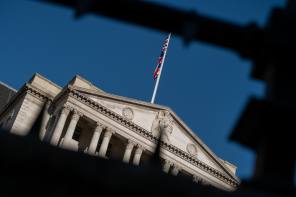

Investors have reacted badly to the widely anticipated Federal Reserve decision to raise US interest rates overnight, with US Treasury yields spiking and the S&P 500 ending down close to 1 per cent.
Yesterday the Federal Open Market Committee (FOMC) decided to increase the Federal Funds Rate (FFR) to between 0.5 and 0.75 per cent, a rise of 0.25 percentage points.
While the move was anticipated, markets appeared to be more concerned by revised forecasts from the Fed which point to an increased number of additional rate rises in 2017. The FOMC only tinkered with growth and unemployment forecasts, but suggested it would implement three 0.25 per cent rate rises next year, having previously forecasted two.
The FOMC was careful not to explicitly account for any impact of fiscal stimulus from Donald Trump's incoming administration, but did strike a cautious note over inflation expectations by upping its forecasts for 2017 hikes from two to three.
As a result, long and medium-dated US Treasuries sold off, while the S&P 500 closed 0.8 per cent lower. The yield on 10-year US Treasuries rose past 2.6 per cent for first time since 2014, continuing the recent sell-off. The bonds yielded around 1.8 per cent at the start of last month.
Similarly, and as expected with tighter monetary policy, the dollar rose against the pound, euro and yen. Sterling is now trading at $1.25 versus the dollar.
M&G fixed interest investment director Anthony Doyle said: "The fixed income market believes that the outlook for the US economy has changed considerably since the last meeting of the FOMC on November 2."
However, Mr Doyle said the FOMC had displayed a measure of caution by only slightly tightening its 2017 rate hike outlook. Some economists, by contrast, anticipate four rate rises in 2017.
He said: "Looking forward, a Janet Yellen-led FOMC will be keen to carefully manage the market’s expectations for the path of monetary policy, for fear of destabilising the US economy.
"A rapid sell-off in long-dated bonds, combined with an appreciating US dollar caused by attractive relative interest rate differentials, would lead to a rapid tightening of monetary conditions."
Paul Ashworth, Capital Economics' chief US economist, said: "The slightly faster than previously anticipated pace of monetary tightening in 2017 is, at first glance, hard to square with the Fed's economic projections."
"Those economic projections clearly still don't incorporate the strong possibility of a major fiscal stimulus next year.
"Nevertheless, a few Fed officials clearly thought it made sense to jump the gun and raise their interest rate projections a little. Indeed, Janet Yellen admitted as much."
The increase in forecasted rate rises, combined with the sharp rise in US Treasury yields, has also affected emerging markets with the Nikkei 225 dipping 0.2 per cent, the Hong Kong index dropping 1.5 per cent and the Australian index down 0.9 per cent.



